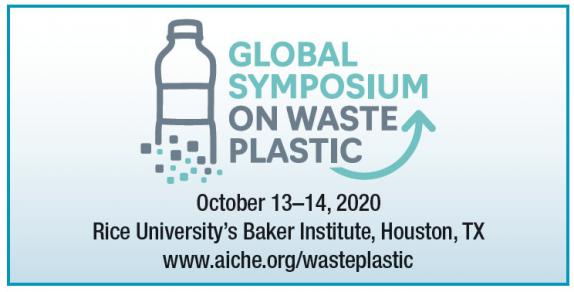Plastics are used extensively in various industries, including clothing, cosmetics, tires, containers, and more. If the rate of current production of plastics continues, by 2050, plastic manufacturing and processing will account for 20% of petroleum consumed globally and 15% of the annual carbon emissions. Unfortunately, the environmental impact of plastics from cradle to grave is quite high due to their energy-intensive manufacturing processes and their inability to easily biodegrade. Abundant plastics production coupled with the potential for negative environmental effects increases the demand for more efficient waste management practices, remediation technologies, and recycling systems for plastic waste.
Waste management. To minimize the impact of plastics, researchers are focusing on waste management and the creation of a circular economy. By creating tools and methods based on factors such as population density and income, engineers can predict waste generation in a region and more effectively plan how to handle that waste. Similar tools can be used to assess the carbon footprint of a particular region and predict potential health effects on the community based on the types and quantities of plastic wastes that will be present. Such models influence decision-making, as they allow policymakers to target specific regions when implementing waste-minimization policies. Additionally, models that can help in assessing the health and environmental effects of various types of plastics will guide policy and corporate decision-making, and may even influence consumer choices in the future.
Remediation technologies. An emerging area of research in remediation technologies is creating processes that convert plastic waste into useful energy sources in developing nations. For example, a research team led by Jeffrey Seay at the Univ. of Kentucky produced fuel derived from the pyrolysis of plastic waste that could serve as an alternative to conventional diesel. The team compared various characteristics of their fuel and diesel, including their densities, flash points, energy contents, copper strip corrosion metrics, and distillation data to analyze the feasibility of drop-in replacement. They determined that the plastic-derived fuel could serve as a viable substitute for traditional diesel. In fact, if all the waste plastic in Uganda was converted to the new fuel, the energy output would be sufficient to provide power for the country’s capital, Kampala.
In addition to alternative fuels, researchers are investigating ways to utilize waste plastic in the creation of nontoxic substitutes for materials in common household products. For instance, a team at the Univ. of Massachusetts Lowell led by Ramaswamy Nagarajan is using plastic waste to create nonhalogenated flame-retardant materials and polysaccharide-based surfactants.
Recycling systems. To effectively shrink the environmental footprint of plastics, engineers must optimize the recycling and upcycling processes associated with these materials. Various methods of recycling plastics exist, each with its own disadvantages. Mechanical recycling is associated with high sorting costs, as it is most effective for plastics of the same type. Co-gasification and coke ovens contribute to compromised air quality, liquefaction can be used only to treat low volumes, and methods such as pyrolysis, hydrocracking, degradative extrusion, and catalytic cracking have high costs.
Upcycling of various waste plastics using chemical transformations is an emerging area of interest that has the potential to avoid these disadvantages. Scott Nicholson of the National Renewable Energy Laboratory (NREL) proposed a method for the chemical recycling of polyethylene terephthalate (PET) to higher-value fiberglass-reinforced plastics (FRPs). This method would produce fewer emissions than the traditional FRP supply chain and create an economic incentive for the recycling of PET.
A research group at the Univ. of Toledo is also focusing on PET recycling. This team is using novel superacid catalysts to transform PET into terephthalic acid and ethylene glycol, which can be used as feedstocks for other products. Discovering catalysts that are recoverable, low-cost, and selective for the conversion of waste plastic remains a challenge.
To investigate the emerging research and novel technologies that are being developed to address plastic wastes, AIChE’s Institute for Sustainability held the 2019 Global Symposium on Waste Plastic at the Univ. of Kentucky last September. The call for abstracts is now open for this year’s conference, which will take place in October. Please contact lucya@aiche.org for more details.

Copyright Permissions
Would you like to reuse content from CEP Magazine? It’s easy to request permission to reuse content. Simply click here to connect instantly to licensing services, where you can choose from a list of options regarding how you would like to reuse the desired content and complete the transaction.
